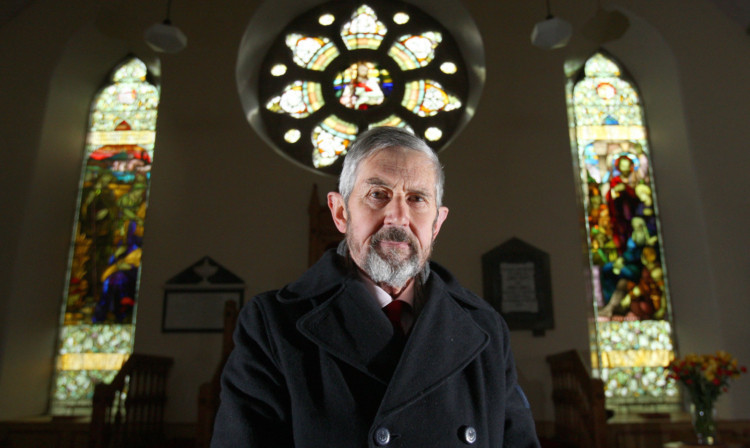A sleepy Angus village was revealed as the setting of a historic mystery when foreign visitors came to church.
Members of an art class at Carmyllie Kirk looked up from their painting last week to see a pair of Swedes, who asked “Do you have our church bell? Because we’ve got yours.”
The men explained they were on a mission for the Swedish Lutheran Church, to find out why a remote church outside Stockholm has a bell clearly inscribed Carmylie, the old spelling of the village.
While many Scottish churches have equipment made in the foundries of Belgium, Holland and Scandinavia, residents are baffled why the original village bell made the trip the other way.
Local heritage society member James Lindsay thinks the 1715 Jacobite rebellion may have sent the ringer east in exile.
He said: “In 1715 when Earl James Maule of Panmure entertained the Old Pretender (James Stuart) at nearby Panmure House, during the first days of the Jacobite rebellion, he gave instructions that the Carmyllie Church bell be rung from dawn till dusk in celebration.
“The order was duly carried out until, in the words of the church records ‘the bell was rendered useless.’ It was assumed the original Carmyllie bell had cracked but perhaps it was only slightly damaged.”
The rising of The Fifteen was the attempt by Stuart to regain the British throne for the exiled House of Stuart.
Carmyllie’s present bell was examined during last year’s extensive restoration programme and was found to bear information that it was forged in Edinburgh in 1716.
The original may have been only chipped or the swivel mounting may have been slightly damaged.
A wish to dissociate the area from the rebellion, when Earl James had raised 500 men in the district for the cause, may have further encouraged replacement.
Many churches in Scotland have bells from the Low Countries such as Kettins but traffic the other way is anomalous and just how the Carymllie ringer may have made the epic journey to Sweden remains a complete mystery.
Recent examination of the church by leading architectural historians places much of the present structure at an earlier date, pre-Reformation when it was known as St Mary’s Chapel.
Heritage enthusiasts and the kirk’s minister, the Rev Stewart Lamont, are keen to find out more and establish links with the Swedish church, which the enigmatic visitors did not name.
He said: “I would love to hear from the Svenska Kyrkan (Swedish Church) although I have not been passed their details yet.”
Carmyllie church boasts some of the finest stained glass in Scotland and was renovated last year.
The church can be viewed by appointment and Sunday service is held at 9.30am.
A book, Carmyllie: Its Land and People, is about to be launched. It is the work of Carmyllie Heritage Society.
